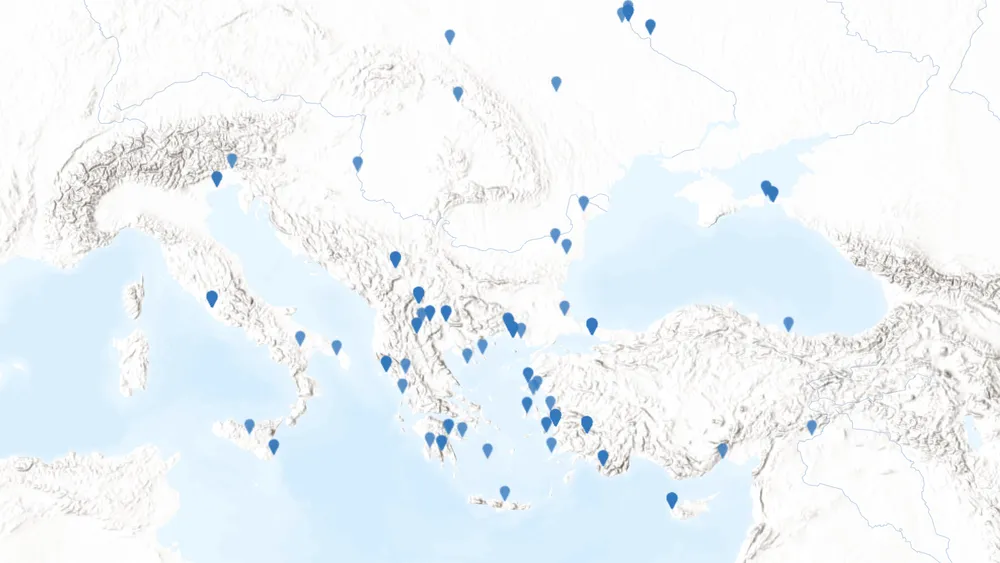Mapping Medieval Metadata
Illuminating communication in the medieval Byzantine Empire through a geo-dataset of lead seals
View project websiteIlluminating communication in the medieval Byzantine Empire through a geo-dataset of lead seals
View project website
In the medieval Byzantine Empire, structures and processes of communication were radically different from the modern day. While the content of that communication – by which authorities allocated resources, answered queries, and made demands – has long since vanished, its traces remain in the form of lead seals.
Lead seals were used to enclose correspondence and assure the recipient of the genuineness of the contents. The seal typically includes the owner’s name, title, and an invocation to a religious figure. Despite the vast number of seals (estimated at about 80,000), only approximately 5,000 have any sort of provenance. These 5,000 seals provide “metadata” about people’s communications. No attempt has ever been made to collect and analyze this valuable information, as the finds are scattered from England to Afghanistan and the publications exist in a wide array of languages. Because of the scattered nature of the evidence, a digital database is the only way to approach the matter of provenanced seals, and to make their evidence available for research on the functioning of pre-modern states.
The project is to create a centralized, standardized, geo-dataset that will be accessible to anyone for future study. The dataset of lead seals from ‘Mapping Medieval Metadata’ is the first step in establishing a larger set of geo-data of provenanced communications metadata from the Middle Ages.
Dataset Curation